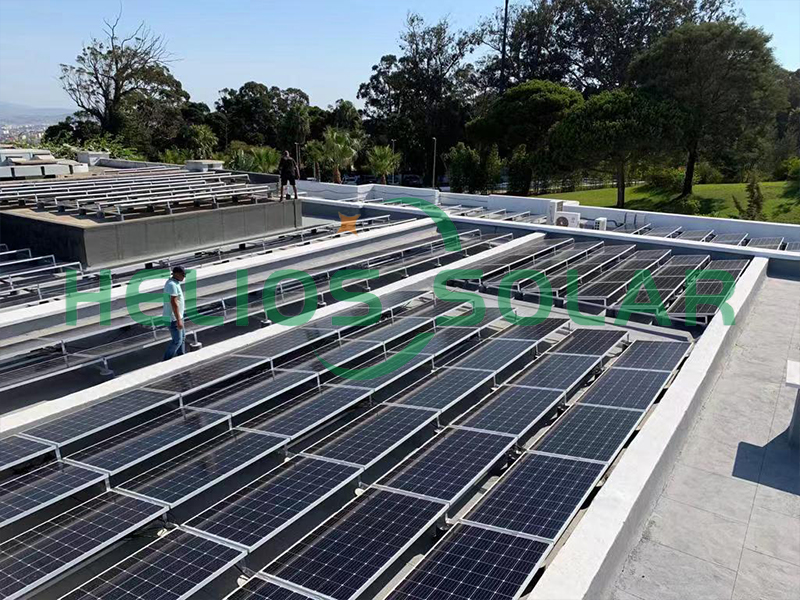In recent years, the use of solar energy has gained enormous momentum as a sustainable alternative to traditional energy sources. Among the various types of solar panels in the market, monocrystalline solar panels stand out for their efficiency and reliability. Capable of harnessing sunlight and converting it into usable electricity, these cutting-edge panels have revolutionized the renewable energy industry. Understanding the manufacturing process of monocrystalline solar panels can provide valuable insights into the technology’s efficiency and environmental impact.
Production of monocrystalline solar panels
The production of monocrystalline solar panels begins with the extraction of raw materials. Silicon plays a vital role as the main ingredient because of its unique ability to convert sunlight into electricity. The production of pure silicon involves the purification of silica obtained from sand and quartzite ores. Through a series of complex chemical processes, impurities are removed to produce high-quality silicon. This pure silicon is then transformed into cylindrical silicon ingots by a method known as the Czochralski process.
Process of monocrystalline solar panels
The Czochralski process helps form the building blocks of monocrystalline solar panels. During this process, a single crystal seed is dipped into a crucible filled with molten silicon. As the seed crystal is slowly pulled up and rotated, it collects molten silicon that solidifies around it. Slow and controlled cooling can form single large crystals with a highly uniform structure. This monocrystalline silicon ingot is then sliced into thin slices, which are the core components of solar panels.
Once a wafer is obtained, it is optimized through various manufacturing steps. These wafers are often chemically treated to remove impurities and improve their conductivity. They are then coated with an anti-reflective layer to enhance sunlight absorption. To further increase the efficiency of the solar panel, a grid of metal electrodes is applied to the surface of the wafer to allow the collection and flow of electrical current. These wafers are interconnected, wired, and encapsulated in protective glass and polymer layers to ensure durability and longevity.
One of the main advantages of monocrystalline solar panels is their high efficiency in converting sunlight into electricity. The uniform crystal structure of single crystal silicon allows electrons to move more freely, resulting in higher electrical conductivity. This can produce more electricity with the same amount of sunlight as other types of solar panels. Monocrystalline silicon panels also perform well in low-light conditions, making them suitable for areas with variable weather patterns.
Another important aspect of monocrystalline solar panels is their environmental impact. The production process, while resource-intensive, becomes more sustainable over time. Solar panel manufacturers have implemented recycling programs to minimize waste generation and use more environmentally friendly materials. Furthermore, the long lifetime of monocrystalline solar panels ensures that their environmental benefits far outweigh the initial carbon footprint of production.
In summary, the process of manufacturing monocrystalline solar panels involves several complex steps that result in a highly efficient and durable solar product. The use of high-quality monocrystalline silicon enables the panels to use sunlight more efficiently, providing renewable and sustainable energy. As the world continues its transition to clean energy solutions, monocrystalline solar panels represent an important step towards a greener future.
If you are interested in monocrystalline solar panels, welcome to contact solar panel manufacturer Radiance to read more.
Post time: Jul-05-2023


